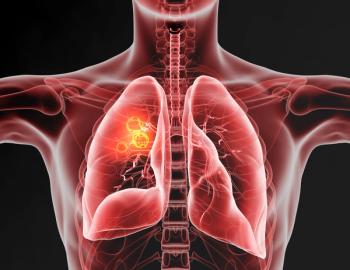
Safety Culture in the Pharmacy
I have never met a pharmacist who intentionally set out to make an error.
I have never met a pharmacist who intentionally set out to make an error. Most pharmacists are detail-oriented individuals who take their roles seriously.
After all, pharmacists are the umpires of the health care game. They enter, verify, and triple check prescriptions, orders, and final products until they are satisfied.
Pharmacists make sure that the correct medication is going to the correct patient. I signed up for this when I applied to pharmacy school in 1993.
At the time, I didn’t know what I was signing up for except a nice salary. I had no idea about the culture of safety in many medical jobs, or that a career in pharmacy required perfectionism.
Fate would have it that I married a man in safety, as well. While he reduces on-the-job accidents along with the Occupational Safety and Health Administration (OSHA) and other safety organizations, I work in a hospital where helping patients become well is the goal.
Nevertheless, the Journal of Patient Safety estimates that more than 400,000 people die each year due to harm in the hospital, making it the fourth leading cause of death in the United States. If this were any other industry, the organization would be shut down until the cause of harm was fixed, but hospitals simultaneously save lives, and so they stay open.
Hospitals have cultures that blame people rather than processes. Blaming people reduces error reporting, which shuts down improvement in processes.
Health care needs to view all errors as opportunities to improve systems and processes to catch mistakes caused by human error. Keep in mind that humans build processes, as well.
But will blaming people instead of processes ever change?
I asked a pharmacist once why he didn’t report errors. He told me that he only reports the errors that matter.
Don’t they all matter, though? Choosing and picking which error to report is looking through a punitive lens rather than a process lens.
I try to make it my practice to report all errors, even my own, because it is the only way to shed light on things that need to be adjusted in the system. If there are duplications missed regularly and a trend develops, the system analysts can figure out how to adjust the alerts to be better.
Changing how pharmacists check for errors could help, but if we don’t report, then they don’t know. In the meantime, we shouldn’t pick and choose what we report.
In the automotive industry, safety falls under human resources. Many times, an employee safety group is developed to look at the issues affecting the company.
Hospitals should employ the same type of safety group that not only encompasses risk management, information technology, and nursing, but also includes actual clinicians who work with the systems and interact with patients and their orders.
There should be multiple pathways provided for employees to bring suggestions and concerns to the group to look at the system and make it better, rather than just reporting errors with no follow-up and breaking down the processes that lead to a particular mishap.
We have processes and rules in place to make hospitals safer, but the culture can be so tainted that no one follows the protocols that are in place. It is true that when you start looking at safety through the lens of culture, you see how challenging it is to change.
Safety culture starts at the highest level of an organization and trickles down. If management does not have safety as a priority, then I guarantee you that no one else will.
One of the most damaging messages a pharmacist can receive is leadership mishandling a medical error. If our leaders do not take the time to investigate the systems involved with the error and how the error happened, and instead rush to punitive action toward the clinician, then staff members will become more jaded and less involved.
Medical errors are almost always the result of systematic flaws, rather than a person’s incompetence. Rushing to judgment rarely improves safety culture in a hospital and turns clinicians into something worse.
Here’s what a safety culture in the pharmacy would look like:
- Order entry and/or verification would not be in an area where distractions are abundant. There would be a telephone, but mainly for outbound calls. Order entry/verification would be in a quieter environment separate from where phones are ringing. Why host tasks that require perfection in an area that isn’t conducive to patient safety? If the room isn’t separate, then there will be constant interruptions. Every interruption while pharmacists are in the middle of doing their job is a recipe for disaster, just as it is for a nurse on the floor.
- There would be continuity of care with work assignments. If pharmacists or nurses are changing hospitals every day, then they never really learn their patients. Processes could also vary from one hospital to another, which can lead to confusion for the clinician. If a pharmacist regularly works in the same environment, then he or she is able to see what processes need to change to ensure patient safety. Relationships between nursing and physicians would improve due to continuity of care.
- Nurses and pharmacists would report every single error, no matter how small. Only situations where there was blatant disregard of policy or unsafe acts would be punitive. If there is a near miss, then praise where the error was discovered prior to the patient receiving the wrong care would be given. The system should be designed to catch errors at different levels, rather than relying on one step of the process.
- A safety focus group would be set up where issues and processes are analyzed on a routine basis and changes are evaluated based on these analyses. This focus group in the pharmacy could report to a larger group in the hospital with each department represented if a particular issue affects other departments.
Newsletter
Stay informed on drug updates, treatment guidelines, and pharmacy practice trends—subscribe to Pharmacy Times for weekly clinical insights.















































































































































































































